Abstract
The hypothesis that endogenous short chain fatty acids (C 6-C 10) are important in maintaining seeds of wild oat (Avena fatua L.) in the dormant state by acting as natural germination inhibitors (Berrie, Buller, Don, Parker, 1979 Plant Physiol 63: 758-764) was investigated. When germination of nondormant seeds was inhibited by treatment with short chain fatty acids, the seeds did not revert to a similar biochemical and physiological state as exhibited by dormant seeds. First, nonanoic acid-induced inhibition of seed germination was not reversed by hormone treatments which normally break dormancy in wild oat seeds. Second, nondormant seeds treated with short chain fatty acids maintained similar relative proportions of the pentose phosphate pathway and the Embden-Meyerhoff-Parnas pathway for respiratory glucose metabolism as that found in the nondormant controls. Seeds imbibed in the presence of nonanoic acid lost more amino acids and proteins into the imbibition solution than did the untreated controls, suggesting membrane damage had occurred. Inasmuch as increasing concentrations of nonanoic acid also progressively reduced the growth of the coleoptile and roots of intact seedlings until all growth ceased and no germination occurred, the inhibition of seed germination could be due to a nonspecific inhibition of growth of the embryo, perhaps because of disruption of membrane structure and function. Finally, no correlation between endogenous levels of short chain fatty acids in seeds or isolated embryonic axes and seed dormancy could be demonstrated.
Full text
PDF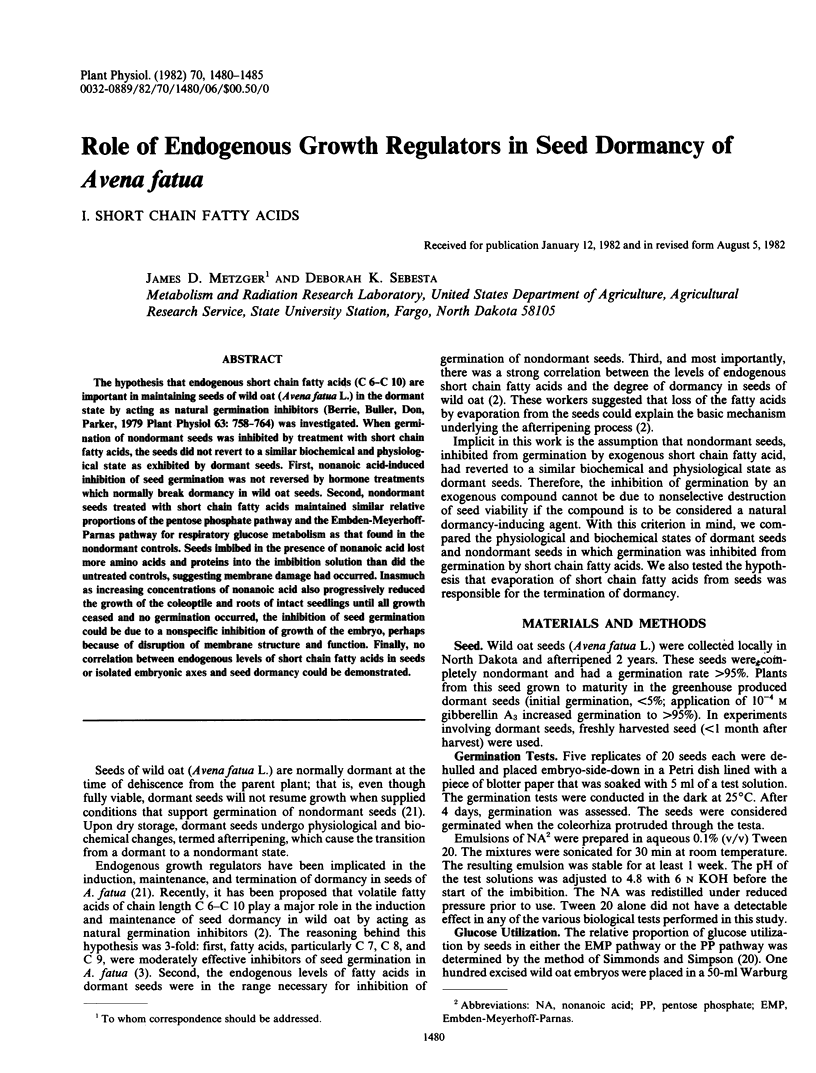
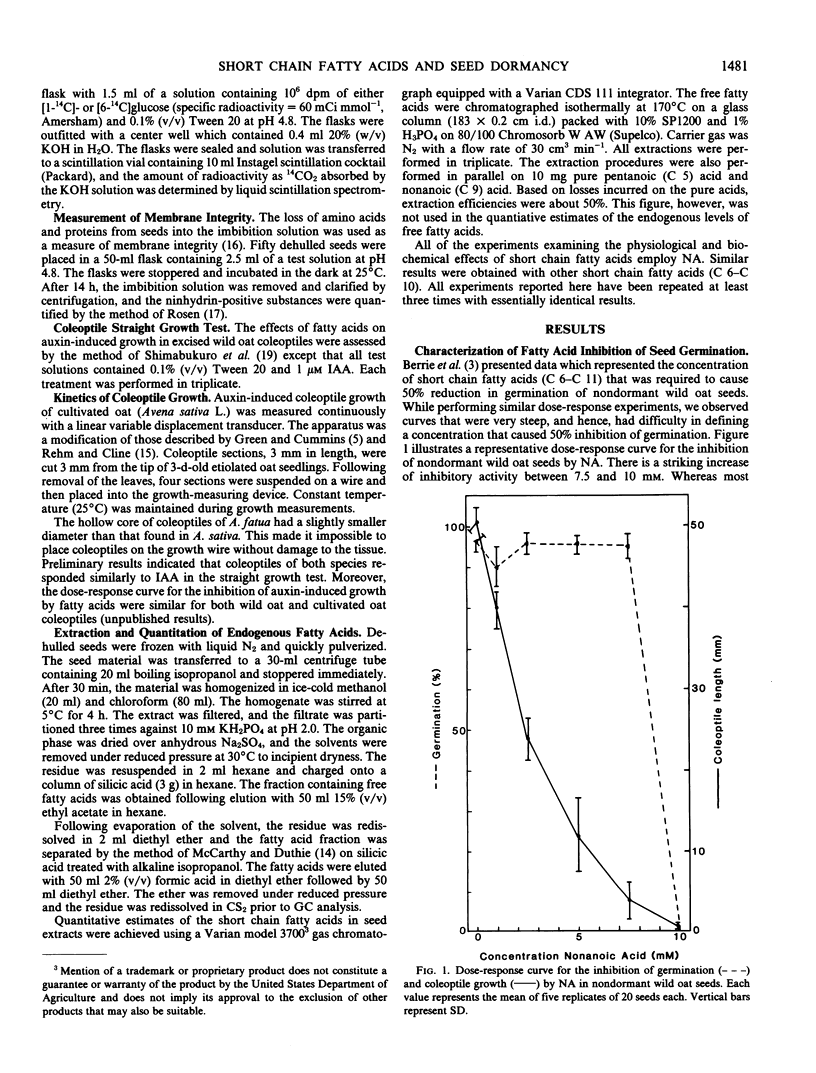
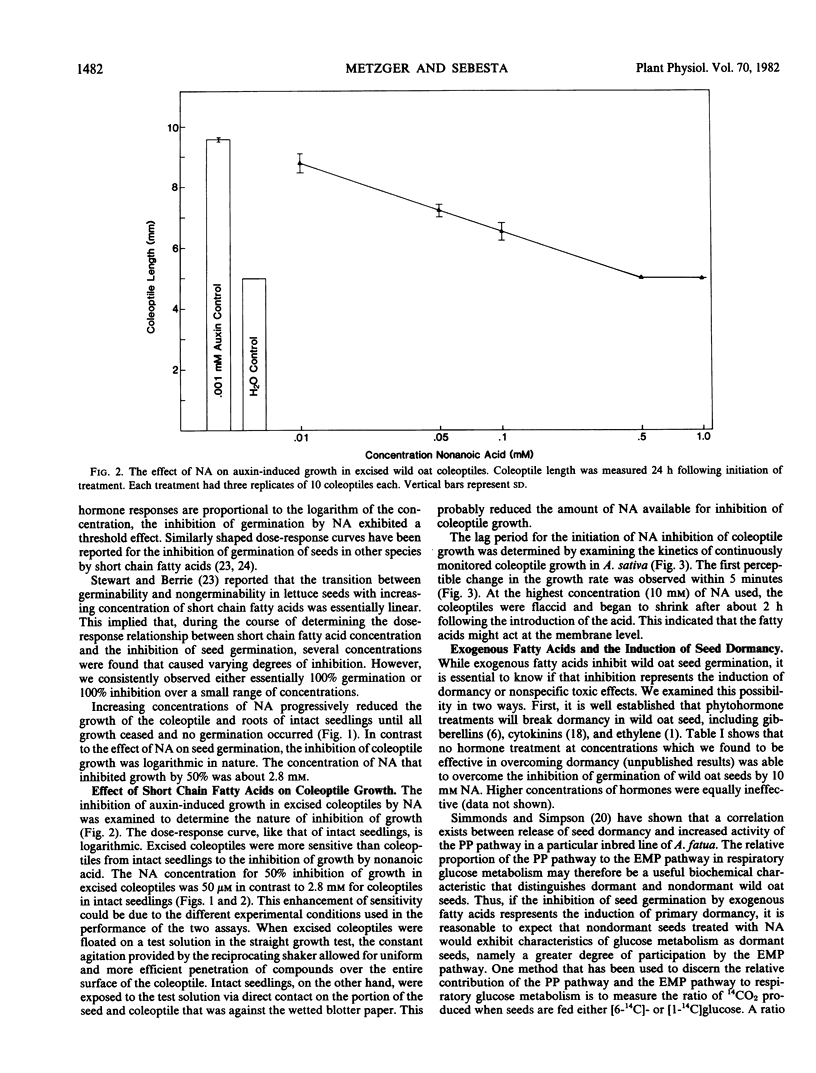
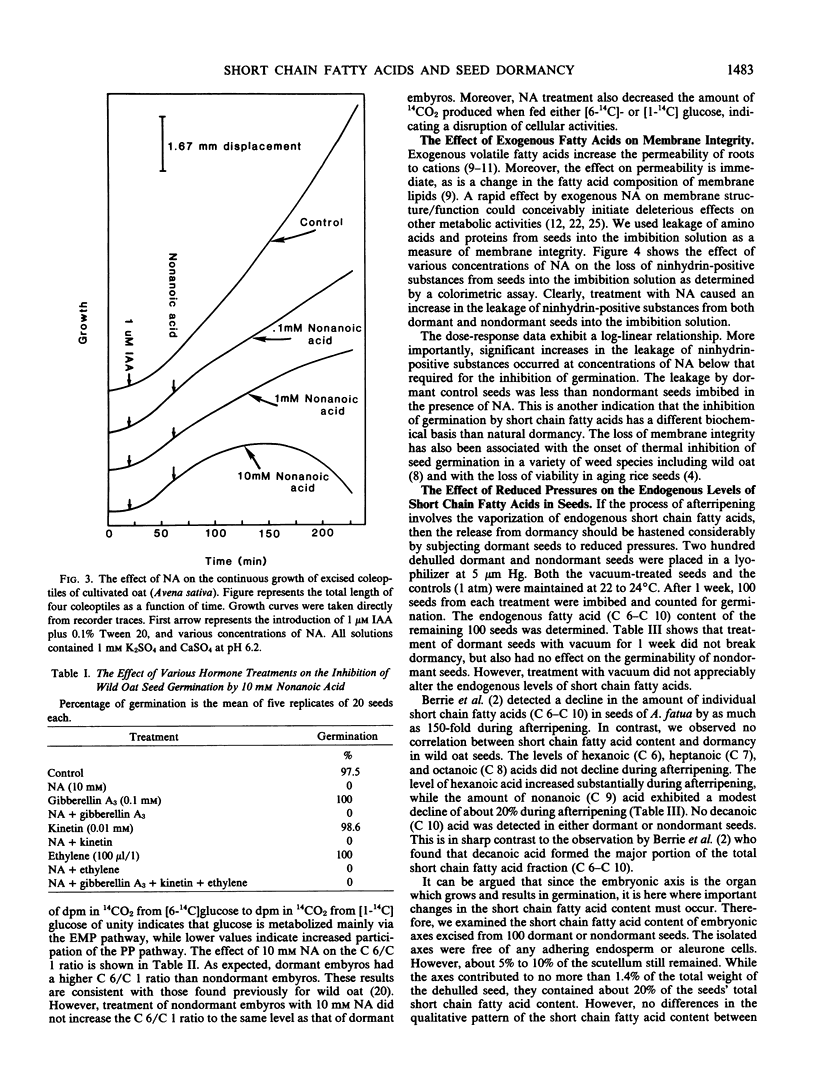
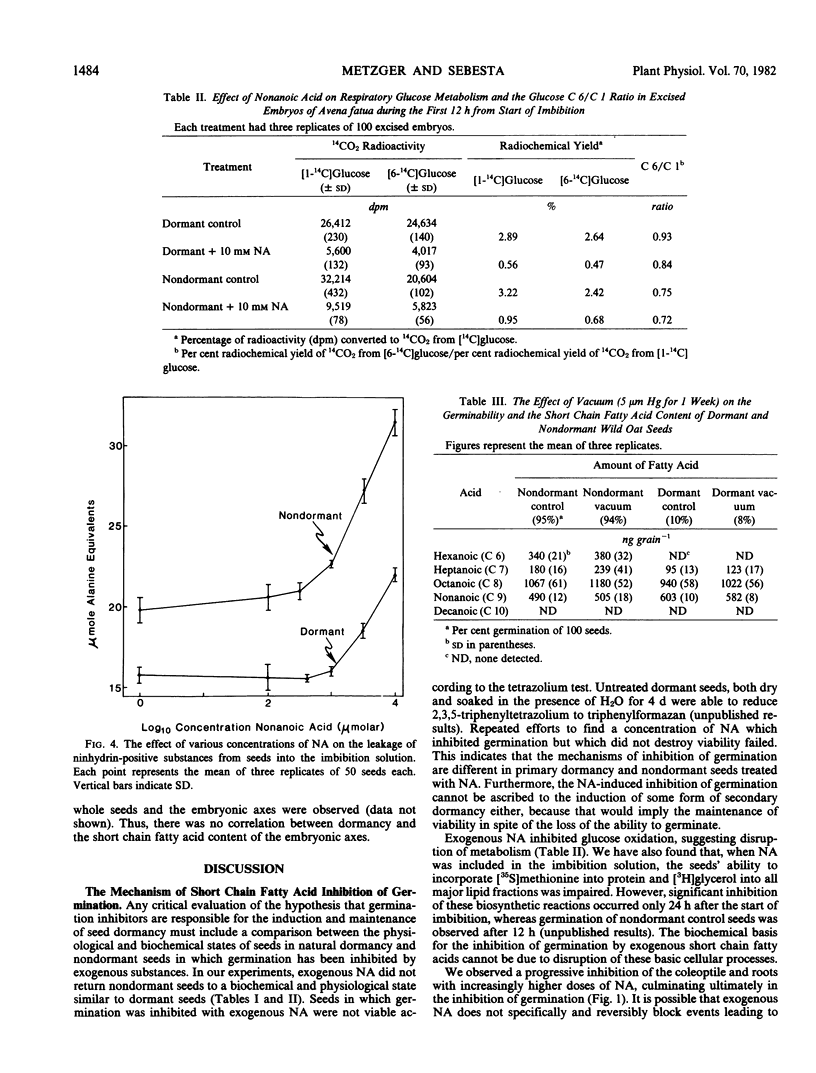
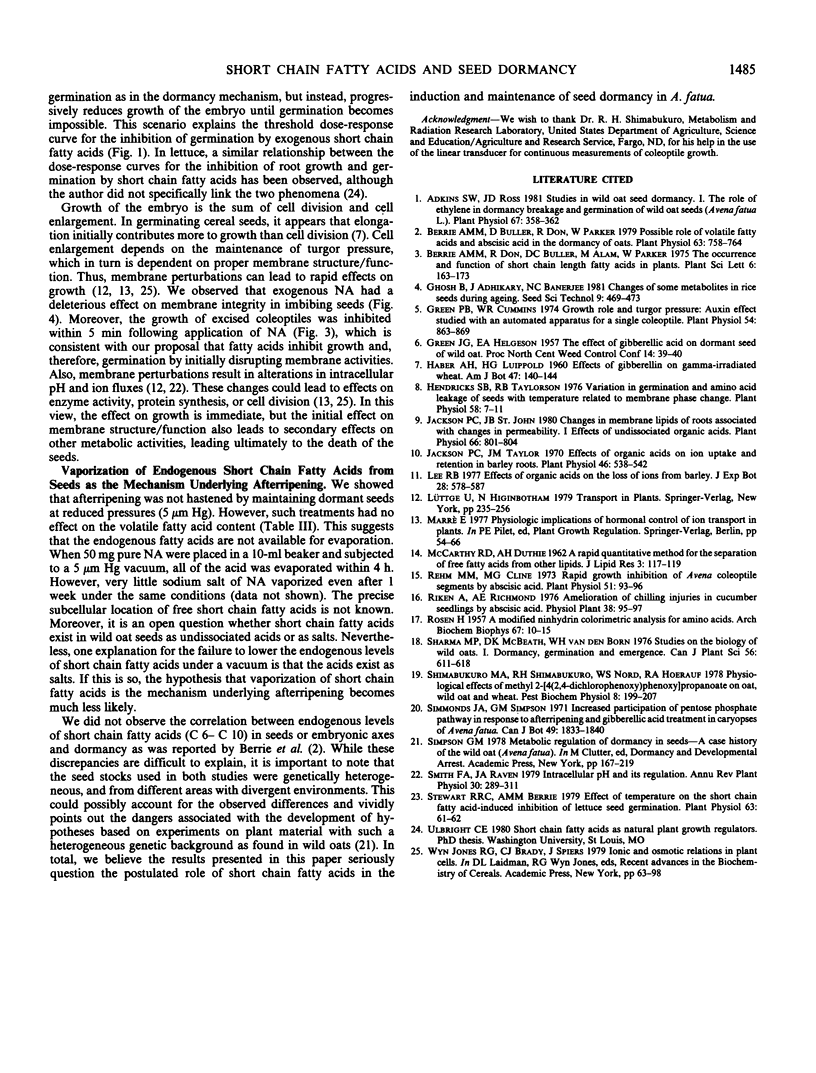
Selected References
These references are in PubMed. This may not be the complete list of references from this article.
- Adkins S. W., Ross J. D. Studies in Wild Oat Seed Dormancy: I. THE ROLE OF ETHYLENE IN DORMANCY BREAKAGE AND GERMINATION OF WILD OAT SEEDS (AVENA FATUA L.). Plant Physiol. 1981 Feb;67(2):358–362. doi: 10.1104/pp.67.2.358. [DOI] [PMC free article] [PubMed] [Google Scholar]
- Berrie A. M. Possible role of volatile Fatty acids and abscisic Acid in the dormancy of oats. Plant Physiol. 1979 Apr;63(4):758–764. doi: 10.1104/pp.63.4.758. [DOI] [PMC free article] [PubMed] [Google Scholar]
- Green P. B., Cummins W. R. Growth rate and turgor pressure: auxin effect studies with an automated apparatus for single coleoptiles. Plant Physiol. 1974 Dec;54(6):863–869. doi: 10.1104/pp.54.6.863. [DOI] [PMC free article] [PubMed] [Google Scholar]
- Hendricks S. B., Taylorson R. B. Variation in germination and amino Acid leakage of seeds with temperature related to membrane phase change. Plant Physiol. 1976 Jul;58(1):7–11. doi: 10.1104/pp.58.1.7. [DOI] [PMC free article] [PubMed] [Google Scholar]
- Jackson P. C. Changes in Membrane Lipids of Roots Associated with Changes in Permeability: I. EFFECTS OF UNDISSOCIATED ORGANIC ACIDS. Plant Physiol. 1980 Nov;66(5):801–804. doi: 10.1104/pp.66.5.801. [DOI] [PMC free article] [PubMed] [Google Scholar]
- Jackson P. C., Taylor J. M. Effects of organic acids on ion uptake and retention in barley roots. Plant Physiol. 1970 Oct;46(4):538–542. doi: 10.1104/pp.46.4.538. [DOI] [PMC free article] [PubMed] [Google Scholar]
- ROSEN H. A modified ninhydrin colorimetric analysis for amino acids. Arch Biochem Biophys. 1957 Mar;67(1):10–15. doi: 10.1016/0003-9861(57)90241-2. [DOI] [PubMed] [Google Scholar]
- Rehm M. M., Cline M. G. Rapid growth inhibition of Avena coleoptile segments by abscisic Acid. Plant Physiol. 1973 Jan;51(1):93–96. doi: 10.1104/pp.51.1.93. [DOI] [PMC free article] [PubMed] [Google Scholar]
- Stewart R. R., Berrie A. M. Effect of Temperature on the Short Chain Fatty Acid-induced Inhibition of Lettuce Seed Germination. Plant Physiol. 1979 Jan;63(1):61–62. doi: 10.1104/pp.63.1.61. [DOI] [PMC free article] [PubMed] [Google Scholar]


